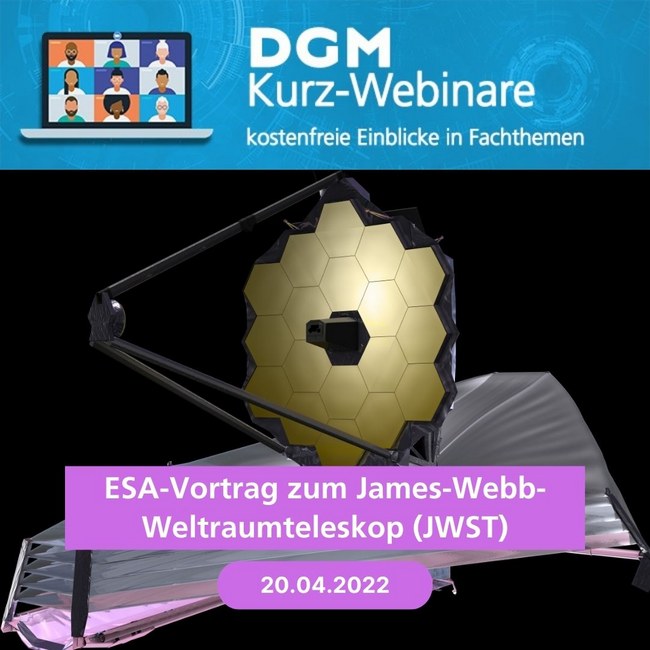
![[Translate to English:] [Translate to English:]](/fileadmin/_processed_/e/1/csm_Screenshot_2022-04-20_at_14.03.48_2f76bf3f29.png)
This once-in-a-generation space exploration mission requires state-of-the-art astronomical instruments and materials. What hurdles and challenges did materials scientists and engineers overcome in constructing the Webb-Space-Telescope? Peter Rumler, a systems engineer at the European Space Agency (ESA) for 35 years and the person primarily responsible for the James-Webb-Space-Telescope, provided first-hand answers in an online lecture.
20 April 2022, the event was organized by the Young-DGM local group of Darmstadt. Despite dwindling student numbers, the Jung-DGM has shown itself to be ambitious and imaginative, both locally at the study sites and digitally in organizing the event. Rumler's remarks illustrated the varied career prospects that materials science and engineering could continue to offer young scientists and engineers. One more reason to keep seeing farther.
We thank Young-DGM for the organization and Mr. Rumler for talking and answering questions about the ESA project James-Webb-Space-Telescope.
![[Translate to English:]](/fileadmin/_processed_/f/0/csm_logodgm-4_b2722eeace.png)
![[Translate to English:]](/fileadmin/user_upload/logodgm-4.png)